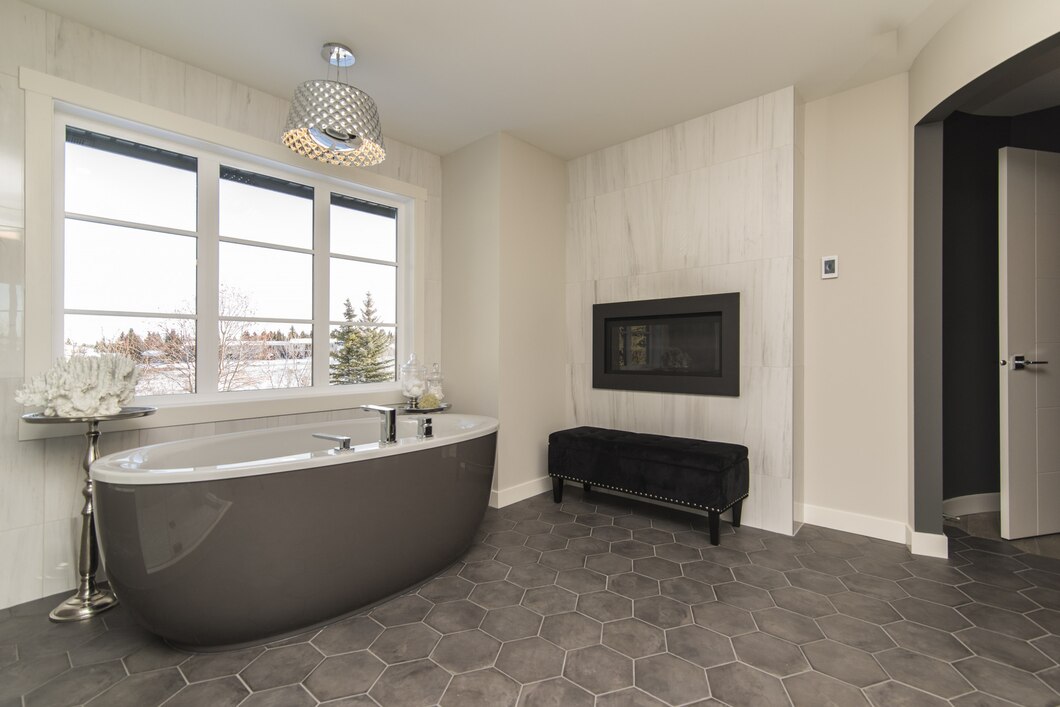
When it comes to remodeling a bathroom, choosing the right flooring is crucial. Not only does the floor need to look appealing, but it also has to withstand the rigors of daily usage. Bathroom floors are subject to moisture, spills, and frequent cleaning, making the choice of flooring especially important. Here, we will delve into the world of bathroom flooring tiles, exploring how to select the best options and successful installation techniques.
Tiles offer versatility and durability, making them a popular choice for bathroom floors. They come in an array of materials, designs, and textures, allowing you to customize your bathroom to fit your style and functional needs. But with so many choices available, how do you pick the right one? At Champion Services, we understand the challenges and are here to provide guidance and support.
Understanding Bathroom Flooring Options
When renovating your bathroom, the type of flooring you choose plays a pivotal role in the room’s aesthetics and functionality. We offer a detailed look at the options available to ensure you make the best choice for your home. Tile is often the top choice for bathrooms due to its water resistance and durability. The most commonly used types include ceramic, porcelain, and stone.
Ceramic and porcelain tiles are favored for their versatility and range of styles. Porcelain is denser than ceramic, making it more resistant to moisture and stains, which is ideal for the wet environment of a bathroom. On the other hand, ceramic tiles offer a more cost-effective solution and are easier to cut and install, which might be suitable for homeowners looking for a budget-friendly option. Natural stone tiles, such as marble, granite, or slate, provide a luxurious look and unique finish to any bathroom, though they require more maintenance to preserve their natural beauty.
Key Factors in Tile Selection for Bathrooms
Selecting the right tile for your bathroom involves considering several key factors to ensure that it meets both your aesthetic preferences and your functional needs. First and foremost is the tile’s slip resistance. Bathrooms are high-moisture areas, and choosing a tile with a textured surface or a matte finish can provide additional grip, reducing the risk of slips and falls. Safety should always be a priority when selecting flooring for a space like a bathroom.
Another important factor is the tile’s resistance to water. Porcelain tiles, for instance, are known for their low water absorption rate, making them exceptionally suitable for wet areas. Additionally, consider the durability of the tile. A harder tile will withstand traffic and wear over time, maintaining its look and feel under the stress of daily bathroom activities. Lastly, aesthetic considerations also play a significant role; the tiles’ color, size, and pattern should align with your overall bathroom decor, creating a cohesive look. Exploring these elements will help you find the perfect tile that offers both style and functionality for your bathroom renovation.
Step-by-Part Installation Techniques for Bathroom Tiles
Installing bathroom tiles is a meticulous process that requires preparation, precision, and patience. It starts with ensuring your subfloor is perfectly level and strong enough to support tiles, which prevents cracking and breaking over time. After preparing the surface, the next step is to lay out the tiles before permanently setting them. This is known as dry fitting, which allows you to visualize the outcome and make necessary adjustments without committing.
When you begin to lay the tiles, we recommend starting from the center of the room to ensure an even layout as you work toward the walls. Use tile spacers to maintain consistent gaps for the grout, which follows the tile setting. Applying mortar or adhesive correctly is crucial; it should be spread using a notched trowel at a 45-degree angle. Following the adhesive, place each tile firmly, pressing it into the base to avoid air pockets that might compromise the tile’s stability. Once the tiles are set and the adhesive has cured, applying grout seals the gaps and reinforces the tiles’ placement. Lastly, sealing the tiles, especially if they are porous like natural stone, will protect them against moisture and staining.
Maintenance and Care Tips for Bathroom Flooring
Keeping bathroom flooring in pristine condition involves regular maintenance, but the good news is that tile flooring is particularly low maintenance. Regular cleaning with a mild detergent and warm water is typically sufficient to keep tiles clean and glossy. Avoid using harsh chemicals or abrasive tools, as these can damage the tiles’ surface.
Sealing the tiles and grout is also essential in a bathroom setting. This should be done annually to protect against moisture and prevent mold growth. Sealant application is an easy process that significantly prolongs the life of your flooring and keeps it looking new. Additionally, immediately addressing any cracked or damaged tiles is crucial to prevent water from seeping underneath and causing more extensive damage. With these mindful practices, your bathroom tiles will maintain their beauty and functionality for years to come.
Choosing Your Next Bathroom Upgrade With Us
Choosing the right tiles for your bathroom enhances its appearance and functionality. Whether you’re planning a full remodel or a simple update, the right tile can completely transform the space. Our team at Champion Services understands the importance of details and quality, guiding you through each step—from selection to installation.
Through our bathroom remodel services in Enterprise, NV, we can help you make informed decisions and achieve the bathroom you’ve envisioned. If you’re considering upgrading your bathroom or need professional advice on installation, reach out to our team today. We are always ready to assist you with your home improvement projects, ensuring excellence and satisfaction in every tile we lay. Let us bring your dream bathroom to life, one tile at a time.
